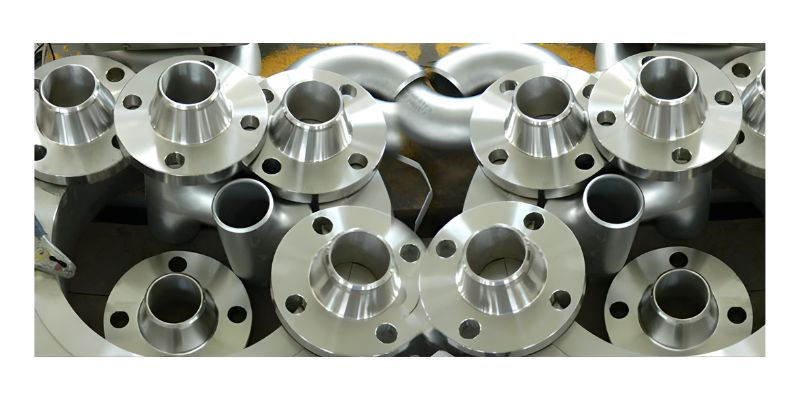Carbon Steel Flanges: The Key Component for Strong and Reliable Piping Systems
- Rohan Kaustav
- Apr 8
- 3 min read

Metallica Forging Inc. is a reputable Carbon Steel Flanges Manufacturer in India. In industrial piping systems, every connection matters. Whether it's for oil and gas, power plants, water treatment, or manufacturing, the strength and reliability of pipeline joints are crucial for smooth operations. Carbon steel flanges are among the most essential components used to connect pipes securely. Known for their durability, affordability, and excellent mechanical properties, carbon steel flanges are widely used in heavy-duty industries across the globe. In this blog, we explore what carbon steel flanges are, their types, advantages, and why they play such a vital role in modern infrastructure.
We are a leading Carbon Steel Flange Supplier in India, offering high-quality products that meet international standards like ASTM, ANSI, DIN, and BS. Indian vendors serve a wide range of sectors, including oil and gas, petrochemicals, power generation, and water treatment, and provide flanges in a variety of designs, including weld neck, slip-on, blind, and threaded.
What Are Carbon Steel Flanges?
A Carbon Steel Flange is a forged or cast ring used to connect pipes, valves, pumps, or other equipment to form a piping system. It is typically bolted in place and may include a gasket between two flanges to prevent leaks. Carbon steel, an alloy of iron and carbon, offers excellent strength and durability, making these flanges ideal for high-pressure and high-temperature environments.
Carbon steel flanges are available in various sizes, pressure ratings, and types, depending on the application. They are produced according to international standards such as ASTM, ANSI, DIN, and EN to ensure quality and compatibility.
Advantages of Carbon Steel Flanges
High Strength and Pressure Resistance Carbon steel flanges are capable of handling high levels of stress and pressure, making them suitable for demanding applications like oil rigs, refineries, and power plants.
Durability These flanges are known for their long service life. Once installed, they require minimal maintenance and can withstand extreme environmental conditions.
Cost-Effective Compared to stainless steel or alloy flanges, carbon steel flanges are more affordable while still delivering reliable performance, especially in environments where corrosion resistance isn’t a primary concern.
Versatility Carbon steel flanges can be used in a wide range of industries and applications. They are easy to fabricate, weld, and customize as per project requirements.
Wide Availability Available in a variety of grades and sizes, carbon steel flanges are easy to source, which ensures faster project execution and reduced downtime.
Common Types of Carbon Steel Flanges
There are several types of carbon steel flanges, each designed for specific functions and connection methods:
Weld Neck Flange: Designed for high-pressure applications, these flanges are butt-welded to the pipe and provide a strong, leak-proof joint.
Slip-On Flange: Easy to install, these flanges slide over the pipe and are welded from both inside and outside. Suitable for low-pressure applications.
Blind Flange: Used to close the end of a piping system or a pressure vessel. Ideal for systems that require inspection or future expansion.
Socket Weld Flange: Suitable for small-diameter, high-pressure pipelines. The pipe is inserted into a socket and then fillet welded.
Threaded Flange: Screwed onto pipes without welding, these are ideal for low-pressure and non-critical applications.
Lap Joint Flange: Used with stub ends, these flanges are perfect for systems that require frequent dismantling or maintenance.
We Supplies Whereas Countries
Applications of Carbon Steel Flanges
Carbon steel flanges are used across a wide spectrum of industries due to their strength and adaptability:
Oil and Gas Industry: Pipelines, storage tanks, and offshore drilling platforms.
Chemical and Petrochemical Plants: For handling aggressive fluids under pressure.
Power Generation: Used in thermal, nuclear, and hydroelectric plants.
Water Treatment Facilities: For both clean water and sewage systems.
Shipbuilding and Marine: Used in ship piping and ballast systems.
Construction and Infrastructure: HVAC systems, fire protection lines, and industrial plumbing.



Comments